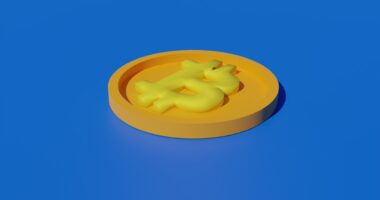Non-fungible tokens (NFTs) are unique digital assets stored on a blockchain, representing various forms of digital content such as art, music, videos, and virtual real estate. Unlike cryptocurrencies, NFTs are not interchangeable, deriving their value from scarcity, provenance, and demand for the associated digital asset. NFTs have gained prominence in the art world by addressing the challenge of proving ownership and authenticity of digital creations.
This technology enables artists to produce limited edition digital artworks and sell them directly to collectors without intermediaries like galleries or auction houses. As a result, creators can now monetize their digital art more effectively. For collectors, NFTs offer a secure and transparent way to own and trade digital art.
The growing interest in blockchain technology and the potential for digital assets as investment vehicles have further contributed to the increasing value of NFTs. This innovation has transformed the art market, creating new opportunities for both artists and collectors in the digital realm.
Key Takeaways
- NFTs are unique digital assets that represent ownership of a specific item or piece of art, and their value is derived from scarcity, authenticity, and demand.
- When choosing a platform for buying NFT art, consider factors such as reputation, security, user interface, and transaction fees.
- Setting up a cryptocurrency wallet is essential for purchasing NFTs, and it’s important to choose a wallet that supports the specific cryptocurrency you plan to use, such as ETH or BTC.
- Research and select NFT art pieces carefully, considering factors such as the artist’s reputation, the uniqueness of the piece, and its potential for appreciation in value.
- Ensure the authenticity and ownership of NFT art by verifying the creator’s identity, checking the smart contract details, and confirming the history of ownership on the blockchain.
- When making a purchase and transferring funds in ETH or BTC, be mindful of gas fees, transaction speed, and the security of the transaction to avoid any potential issues.
- Safely store and display your NFT art collection by using secure digital wallets, considering physical display options, and documenting the ownership and provenance of each piece.
Choosing the Right Platform for Buying NFT Art
Research and Compare Platforms
It’s important to research and compare different platforms to find the one that best suits your needs as a collector or investor. Consider factors such as user interface, fees, security measures, and the variety of art available on each platform.
Popular NFT Marketplaces
OpenSea is one of the largest and most well-known NFT marketplaces, offering a wide range of digital art, collectibles, and virtual real estate. The platform allows users to buy, sell, and trade NFTs using cryptocurrencies such as Ethereum (ETH). Rarible is another popular marketplace that stands out for its decentralized nature, allowing users to create and mint their own NFTs. Foundation is known for its curated selection of high-quality digital art, with a focus on supporting emerging artists.
Getting Started
Whichever platform you choose, make sure to create an account and familiarize yourself with the buying process before making any purchases.
Setting Up a Cryptocurrency Wallet to Purchase NFTs

In order to buy NFT art, you will need to set up a cryptocurrency wallet to store the digital assets and make transactions on NFT marketplaces. A cryptocurrency wallet is a secure digital wallet used to store, send, and receive cryptocurrencies such as Bitcoin (BTC) and Ethereum (ETH). There are different types of cryptocurrency wallets, including hardware wallets, software wallets, and online wallets.
It’s important to choose a wallet that offers a high level of security and is compatible with the cryptocurrencies you plan to use for purchasing NFTs. Hardware wallets are physical devices that store your cryptocurrency offline, providing the highest level of security against hacking and theft. Popular hardware wallets include Ledger Nano S and Trezor.
Software wallets are applications or programs that can be installed on your computer or mobile device, offering a convenient way to manage your cryptocurrency assets. Examples of software wallets include Exodus and MyEtherWallet. Online wallets, also known as web wallets, are cloud-based platforms that allow you to access your cryptocurrency from any internet-connected device.
Coinbase and Binance are well-known online wallets that support a wide range of cryptocurrencies. Once you have chosen a wallet, follow the instructions to set it up and securely store your private keys.
Researching and Selecting NFT Art Pieces
Before making any purchases, it’s important to research and carefully select NFT art pieces that align with your personal taste and investment goals. NFT art comes in various forms, including digital paintings, animations, virtual sculptures, and interactive experiences. Take the time to explore different artists and their portfolios on NFT marketplaces, paying attention to factors such as artistic style, concept, and rarity of the digital artworks.
Consider whether the artist has a strong reputation in the digital art community and whether their work has appreciated in value over time. When researching NFT art pieces, look for artists who have a unique vision and are pushing the boundaries of digital creativity. Pay attention to the story behind each artwork and how it resonates with you on an emotional or intellectual level.
Some collectors may also consider the potential for future resale value when selecting NFT art pieces as an investment. Keep in mind that the value of NFT art is subjective and can be influenced by factors such as cultural relevance, historical significance, and market trends. By conducting thorough research and due diligence, you can make informed decisions when adding NFT art pieces to your collection.
Ensuring the Authenticity and Ownership of NFT Art
One of the key advantages of NFTs is their ability to provide proof of authenticity and ownership for digital art. When purchasing NFT art, it’s important to verify the legitimacy of the digital asset and ensure that you are acquiring the original work from the artist or creator. NFTs are minted on a blockchain using smart contracts, which contain information about the digital artwork, including its title, description, creator’s name, and unique token ID.
This information can be used to verify the provenance of the NFT and confirm its authenticity. Before making a purchase, take the time to review the details provided by the artist or seller on the NFT marketplace. Look for information about the creation process, edition size (if applicable), and any accompanying certificates of authenticity.
Some artists may also offer additional perks or benefits to NFT collectors, such as exclusive access to future releases or physical merchandise. It’s also important to consider the rights associated with owning an NFT art piece, such as the ability to display or license the artwork for commercial use. By ensuring the authenticity and ownership of NFT art, you can have confidence in the value and provenance of your digital collection.
Making the Purchase and Transferring Funds in ETH or BTC

Purchasing an NFT Art Piece
Once you’ve selected an NFT art piece to purchase and set up your cryptocurrency wallet, you can proceed with making the transaction using Ethereum (ETH) or Bitcoin (BTC). Most NFT marketplaces accept Ethereum as the primary cryptocurrency for buying and selling digital art due to its smart contract capabilities and lower transaction fees compared to Bitcoin.
Initiating the Purchase Process
To initiate the purchase process, you’ll need to connect your cryptocurrency wallet to the NFT marketplace and authorize the transfer of funds for the selected NFT art piece.
Considering Transaction Fees and Network Congestion
When transferring funds in ETH or BTC for an NFT purchase, it’s essential to consider factors such as gas fees (transaction fees) and network congestion. Gas fees are required to process transactions on the Ethereum blockchain and can vary depending on network activity at the time of purchase. It’s recommended to check the current gas prices and estimate the total cost of the transaction before proceeding with the purchase.
Receiving Ownership and Authenticity
Keep in mind that blockchain transactions are irreversible once confirmed, so double-check all details before finalizing the payment. After completing the transaction, you’ll receive ownership of the NFT art piece in your cryptocurrency wallet, along with a digital certificate of authenticity linked to the blockchain.
Safely Storing and Displaying Your NFT Art Collection
After acquiring NFT art pieces, it’s important to safely store and display your digital collection to preserve its value and enjoy it for years to come. Since NFTs exist on a blockchain as unique digital assets, they do not require physical storage like traditional artworks but still need to be protected from unauthorized access or loss. To safeguard your NFT art collection, consider using a secure hardware wallet or encrypted software wallet that provides backup options in case of device failure or theft.
In addition to secure storage, consider how you want to display your NFT art collection in virtual or physical spaces. Some collectors choose to showcase their digital artworks in virtual galleries or metaverse platforms such as Decentraland or Cryptovoxels, creating immersive experiences for visitors to explore their collections online. Others may opt for displaying digital frames or screens in their homes or offices to enjoy their NFT art pieces in everyday life.
Regardless of how you choose to display your NFT art collection, remember to share your passion for digital art with others while taking precautions to protect your valuable assets. In conclusion, understanding the value of NFTs as unique digital assets is essential for anyone interested in buying or collecting NFT art. Choosing the right platform for purchasing NFTs involves researching different marketplaces and considering factors such as user experience and available artwork.
Setting up a cryptocurrency wallet is necessary for storing and transferring funds in ETH or BTC when buying NFT art pieces. Researching and selecting NFT art involves exploring different artists’ portfolios and considering factors such as artistic style and investment potential. Ensuring the authenticity and ownership of NFT art is crucial for verifying the legitimacy of digital artworks before making a purchase.
Making a purchase involves connecting your cryptocurrency wallet to an NFT marketplace and authorizing the transfer of funds for the selected NFT art piece. Safely storing and displaying your NFT art collection involves using secure storage options and considering how you want to showcase your digital artworks in virtual or physical spaces.
FAQs
What is NFT art?
NFT art refers to digital artwork that is tokenized using blockchain technology. Each piece of NFT art is unique and can be bought and sold using cryptocurrency.
How do I buy NFT art?
To buy NFT art, you will need to set up a digital wallet and purchase cryptocurrency. Then, you can use a marketplace platform that supports NFT art transactions to browse and buy the artwork of your choice.
What is a digital wallet?
A digital wallet is a software program that allows you to store, send, and receive digital currencies such as Bitcoin or Ethereum. It is essential for buying and storing NFT art.
What are some popular NFT art marketplaces?
Some popular NFT art marketplaces include OpenSea, Rarible, and Foundation. These platforms allow artists to mint and sell their digital artwork as NFTs.
How can I ensure the authenticity of NFT art?
When buying NFT art, it’s important to verify the authenticity of the artwork and the artist. Look for information about the artist’s identity and reputation, as well as any accompanying certificates of authenticity.
What should I consider before buying NFT art?
Before buying NFT art, consider factors such as the artist’s reputation, the uniqueness of the artwork, and the potential for future value appreciation. It’s also important to understand the terms of the NFT smart contract and any associated royalties.





